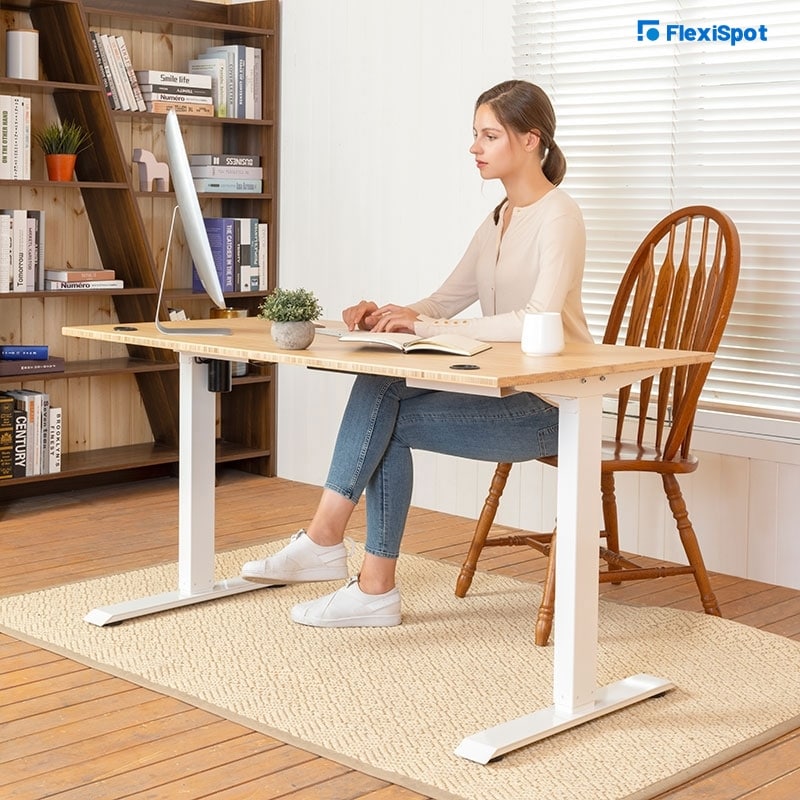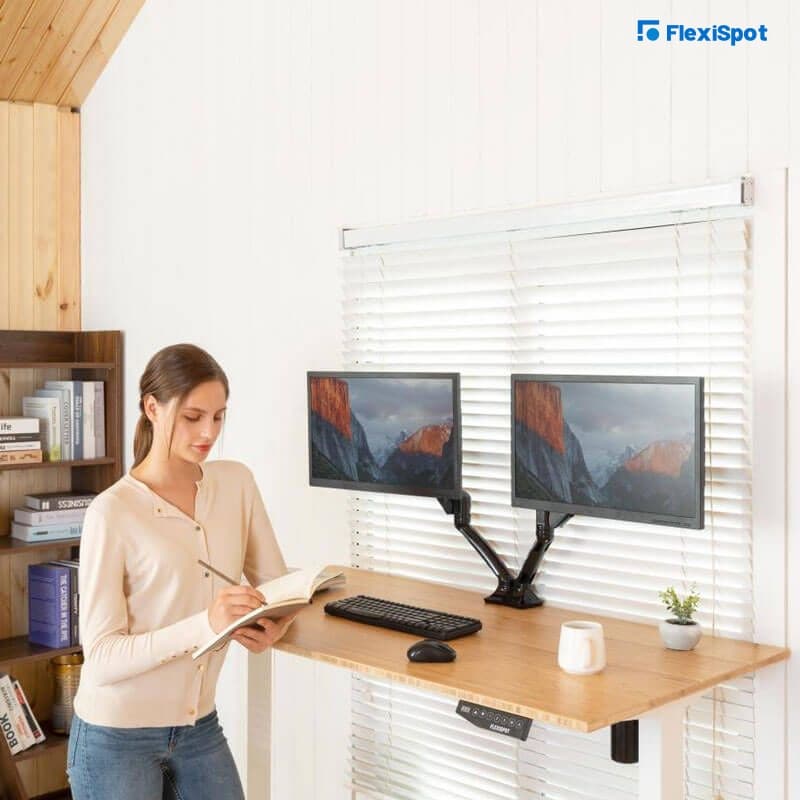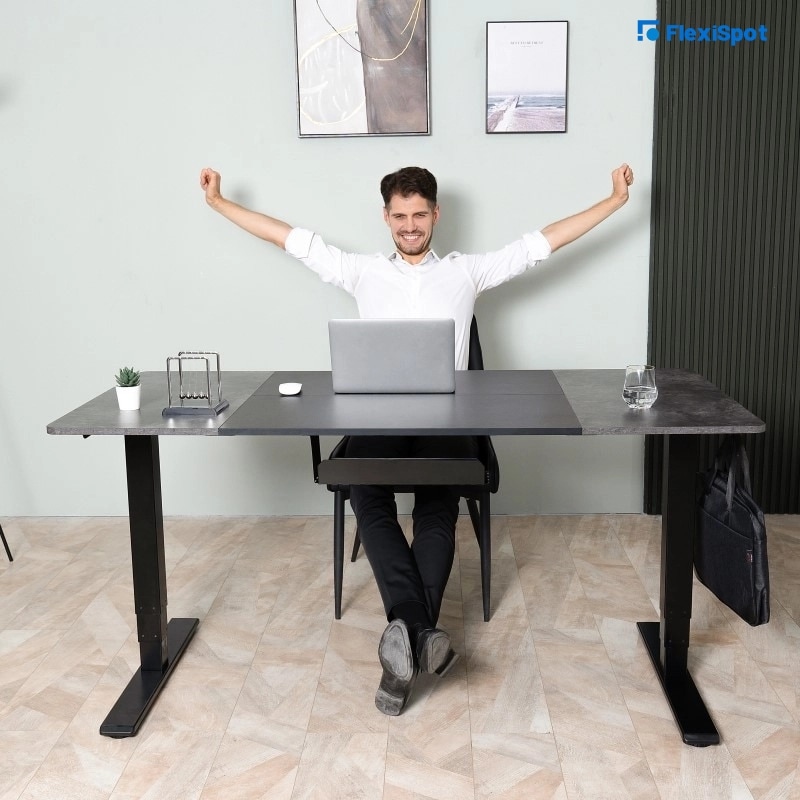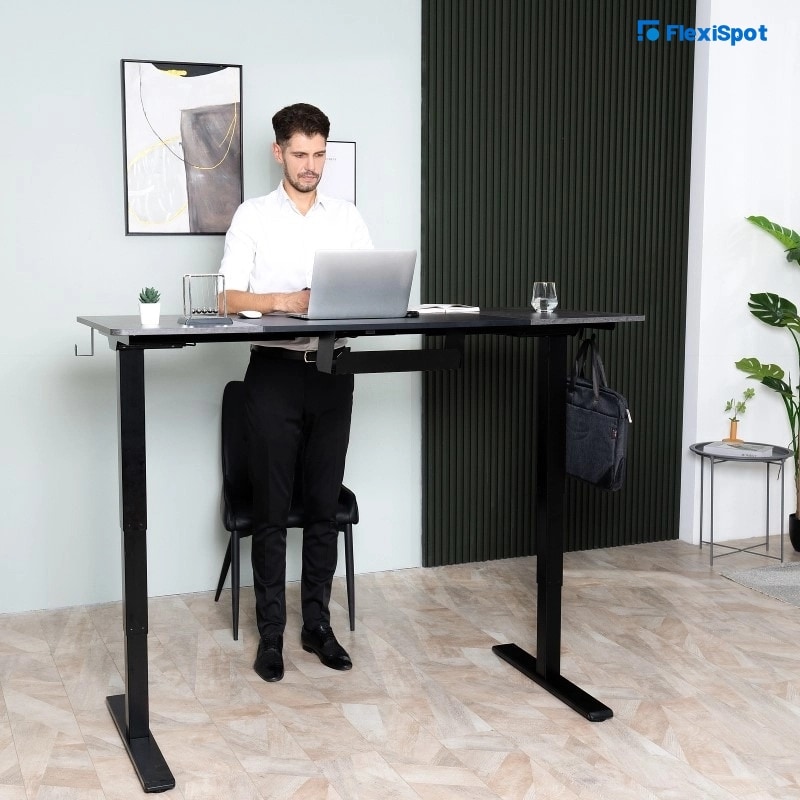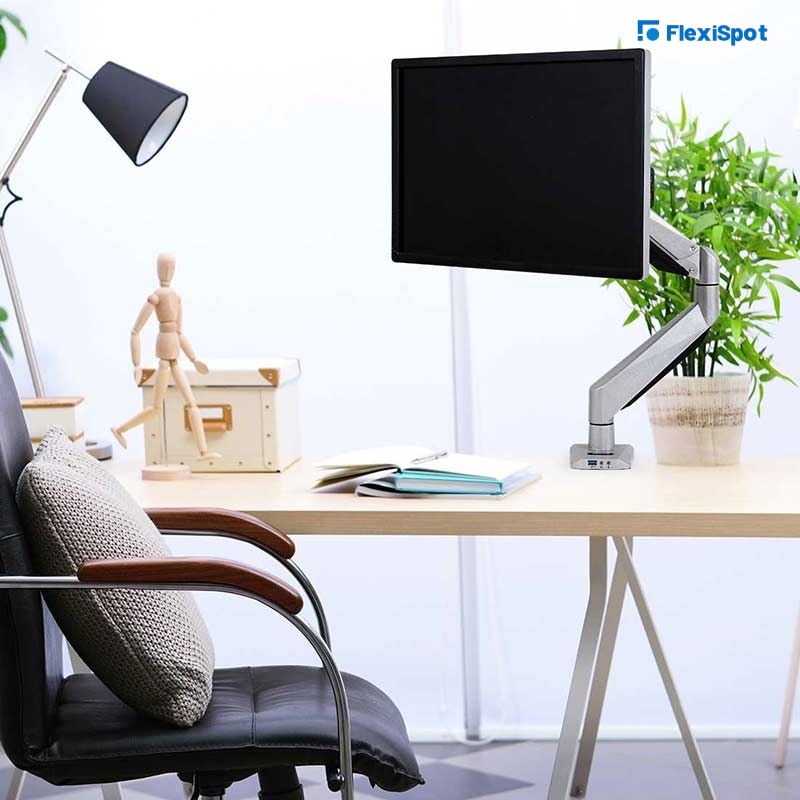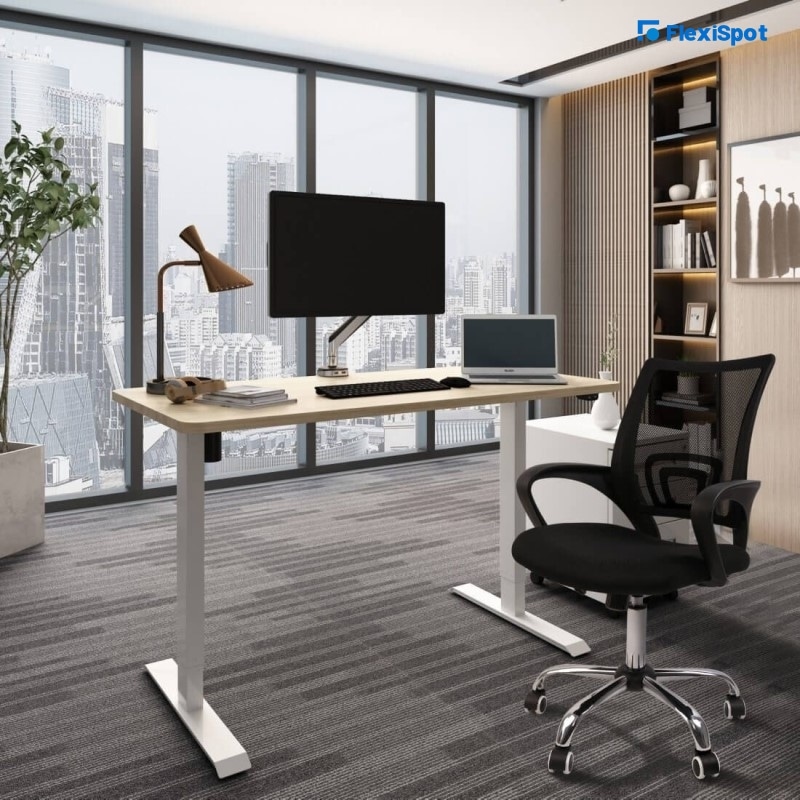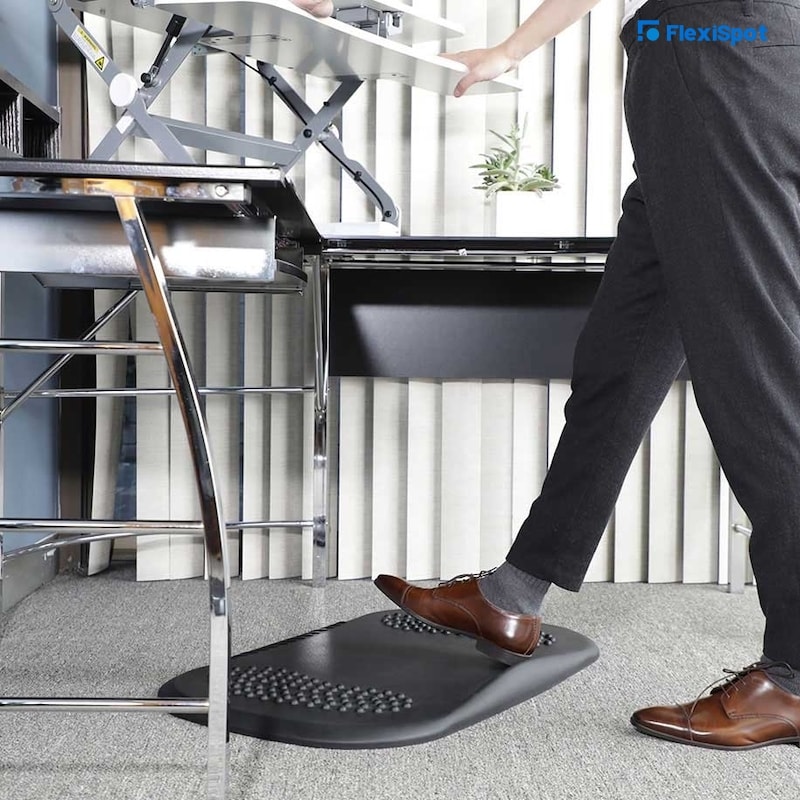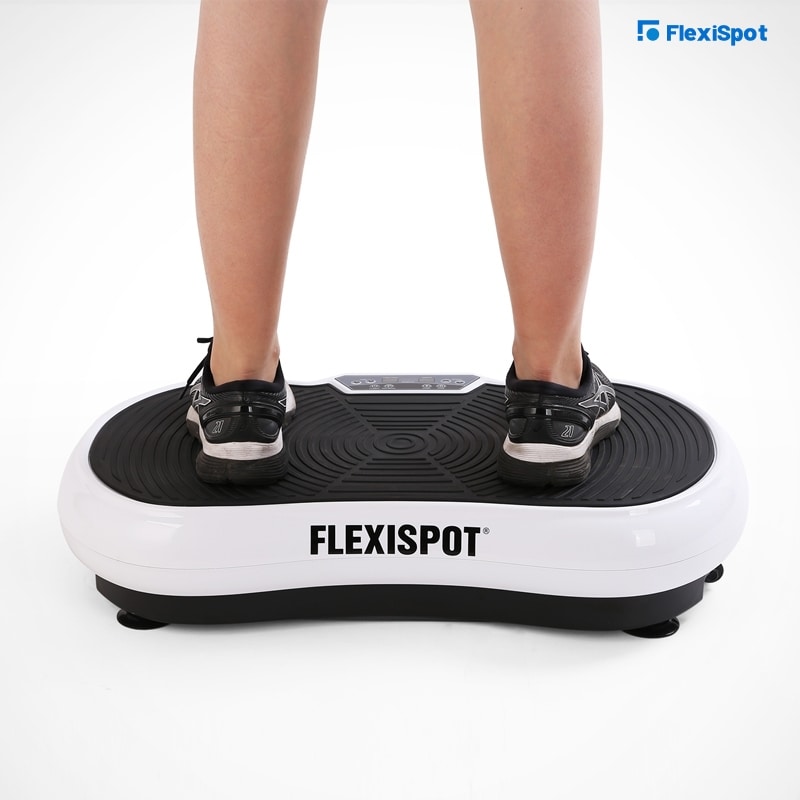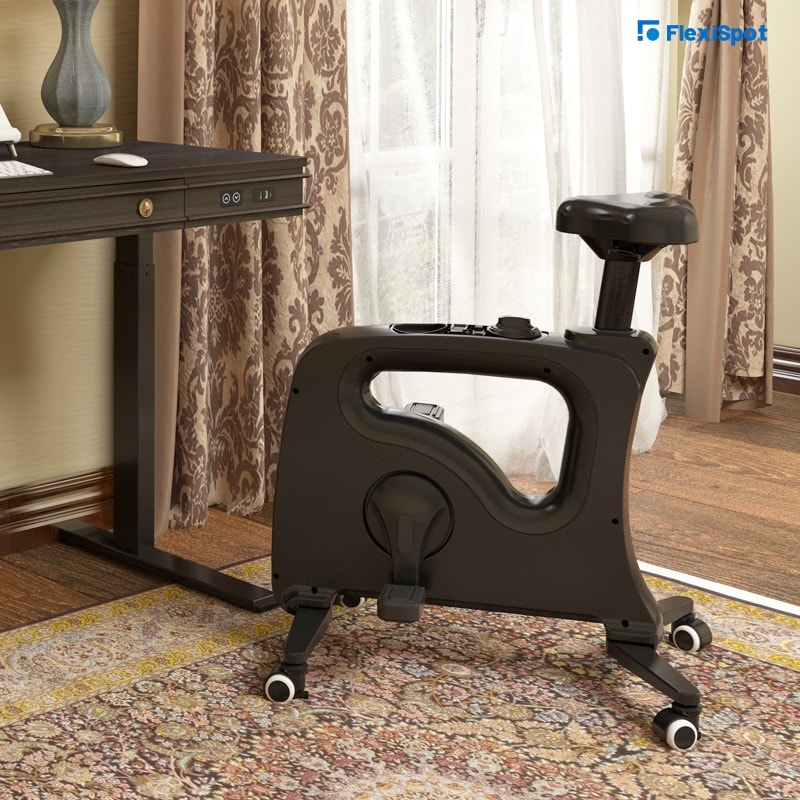Does your job require you to sit at a desk for extended periods? Then you’re liable to develop muscular problems in your neck, shoulder, and back. It may just be a matter of time if you haven’t experienced any issues thus far.
Having frequent workout sessions, even a spot of yoga or stretching exercises does help. However, your busy work schedule and life commitments may leave you less time for active gyming. And whatever gains you make are negated when you go back to your cozy sedentary lifestyle.
Getting a standing desk offers an elegant way around such challenges. But, a sit-stand desk takes the prize. It allows you to sit or stand while taking care of business. You also have the choice to sit at an elevated angle to improve blood circulation- a factor ideal for averting varicose veins, heart problems, and other cardiovascular issues.
Taking the First Steps
Let’s face it, switching to a height-adjustable desk is a challenge if you're used to working while seated. So, try using it as a standing desk so you can get accustomed to the idea. This may be frustrating, but give it a few days, and you'll see how the muscle aches fade as your spine and neck adapt to this new natural position.
It’s like what happens when you switch from a stuffy chair to an ergonomic office chair. Your body has a natural resistance to change, so it’ll hurt for a while. But, comfort and productivity levels peak once your body conforms to ergonomic office furniture.
The Next Step: Making the Best Use of the Controls
The ideal height-adjustable desk features an advanced keypad with memory presets. However, most people still experience problems down the line because they don't know how to optimize these advanced features.
Here are a few considerations to make when playing around with memory presets:
1. Set the height of the desk to ensure your monitor is at eye level regardless of the height
2. Give yourself adequate legroom when in a sitting position
3. Keep your keyboard at chest height at all times to reduce the weight taken on by your shoulders
These may seem like minor considerations but implementing them ensures you’ll enjoy working on your sit-stand desk for years to come.
Harnessing the Full Ergonomic Benefits of Your Standing Desk
This may come off as repetitive. But we can't stress the importance of pacing yourself enough. At first, you'll feel this overwhelming urge to work while on your feet all the time. This is a huge no-no that could do more harm than good.
The following tips will help you get used to using your standing desk:
Sitting and Standing At Regular Intervals
You know your body and how much time you can spend on your feet. So, the trick is starting small and gradually increasing the time you spend sitting and standing. At first, you can stand for about 15 minutes, then sit for the same interval.
Although, there's no fixed rule on how much time you ought to assign to each interval. It's a progressive process that builds on small increments. Eventually, your muscles and spinal alignment will allow you to stand for 30 minutes to an hour or even more.
It's all about making goals, crushing them, and moving to the next ones!
Make Frequent and Deliberate Movements
Please don't stay in one spot like a sentry at his post. Move! Sure, this sounds counter-intuitive and possibly harmful to your productivity. But, the reverse is true. Aside from when you’re sleeping, staying rooted to the same spot is detrimental to your health.
Moving around helps reduce the strain caused by all that blood pumping to your back and lower limbs. Stride around, take a stroll or even move to the water cooler or a colleague's workstation for some small talk.
Alternatively, you can do calf raises or standing desk exercises. Doing so stimulates blood flow, which re-invigorates your energy and productivity levels when you get back to your sit-stand desk.
Don’t Lean on Your Height Adjustable Desk
We all have this overwhelming urge to lean on counters. That's why most stores have that "please, don't lean" sign on glass display counters. Well, the same urge translates to standing desks. And, it's a bad habit you need to overcome to retain the benefits of getting a standing desk.
This is merely second nature, so you'll need to make a conscious effort every day. With time you'll be able to develop a neutral pose.
Maintain the Right Posture
The previous section builds up to this –there are rules on the proper and improper way to stand while using a height-adjustable desk. As hinted, leaning on a raised platform distorts your spine, neck, and shoulder alignment.
These tips will help you retain the proper posture at all times:
1. Resist the temptation to arch your back at all times
2. Keep heels and toes firmly anchored to the floor
3. Always point your toes forward
4. Keep your neck straight
All this will take time and a deliberate effort, but there won't be any pain or discomfort as you get used to it.
The Essence of a Monitor Mount
A monitor placed at an incorrect height negates the ergonomic benefits of your standing desk. For one, you're forced to lean or arch your neck, which has adverse effects on your neck and shoulders. You also have to keep tilting it when standing or bend your neck when sitting to get a better view.
An adjustable monitor arm helps you deal with this in one easy swoop. You also don’t face the risk of dropping your monitor to the floor each time you raise or lower your desk as it keeps your screen fastened in place.
A Compatible Ergonomic Chair
The right ergonomic office chair features controls that allow you to adjust its height to match your desk. It helps if the top part of the seat can level with the base of your knees. This positioning ensures your feet stay anchored to the floor.
That way, your knees articulate at a proper 900 angle, which enhances blood circulation and encourages the appropriate posture for sitting, so you avoid back pain.
A plush armrest is another feature worth considering when looking at ergonomic office chairs. Such a feature cradles your elbows and forearms, reducing the burden on your shoulders, aside from preventing shoulder pain. This also prevents wrist strain that could result in the carpal tunnel and other repetitive strain injuries.
Proper Mouse and Keyboard Positioning
Wrist strain is an occupational hazard for people with desk jobs. Keyboard and mouse positioning compounds the pain and strain if you work for long shifts. If not addressed, this could lead to severe muscular issues over time.
The most convenient positioning for standing is tilting your wrists a bit more upwards when compared to sitting. If your height makes this impossible, consider getting a Clamp-on Adjustable Keyboard Tray to help you get the best positioning.
Anti-Fatigue Mat
Your feet also take a beating from standing on a hardpan surface for too long. You could avoid this by wearing comfortable shoes. But, getting a standing desk anti-fatigue mat is the best way to soften the blow from the hard floor.
The most compatible ergonomic anti-fatigue mat also features massage points that target the pressure point on the soles of your feet. This could be therapeutic as foot massages stimulate nerve impulses to various body organs. You also get to reduce your blood pressure as you have less blood pulling to your highly stressed feet.
Work Out Equipment
Sit-stand desks allow you to break away from your sedentary office culture. On top of that, it could also be an avenue to preserve your workout regimen's gains. These desks have a conservative footprint and excellent ground clearance.
These 2 factors mean that you could slot various office workout equipment into your workstation with ease. So, it’s merely a matter of picking workout gear that complements your fitness routine.
1. Calisthenics
Calisthenics employs various body movements that target and mold multiple muscle groups. While such routines are too distracting to perform in an office, it doesn’t mean you should let all that effort go to waste.
A Vibration Plate Exercise Machine can help you preserve the gains of your calisthenics. It vibrates at various levels, which stimulates muscle contractions. This keeps your muscles engaged while your blood circulates.
2. Lifting Exercise
Powerlifting and other bodyweight exercise routines use various weights to condition your body. Most weight lifters feel an overwhelming urge to carry on lifting things during their workday.
An Adjustable Dumbbell offers you various levels of resistance so you can feed this urge at your standing desk even as you continue to dispense with your tasks.
3. Cycling
Cyclists usually have difficulty finding the time or an appropriate trail to get a few laps in before the workday. Getting an Under Desk Bike lets you peddle your way to your fitness goals right from the comfort of your desk.
Best of all, it operates in silence so you won't distract your workmates as you exercise.
Conclusion
We work in modern office spaces with conveniences that previous generations could only dream of. But, these spaces have more occupational hazards that challenge our bodies and minds to no end. Standing desks come in various shapes and sizes that add flexibility while enhancing ergonomics. But, as you can see, it takes some time and effort to get used to working while standing.
A Height-adjustable desk enhances your health and wellness (to some extent, your wealth too!). But, if you read through this piece, you realize that it won't help if you don't make the best use of it. We hope these few tips help you see where you’ve been going wrong this entire time. Hopefully, now you’ll start using your standing desk like a pro.
As always, feel free to share this article and leave a comment, especially on anything we may have skipped.
Stay healthy, active, productive, and tuned for more workplace productivity tips!
